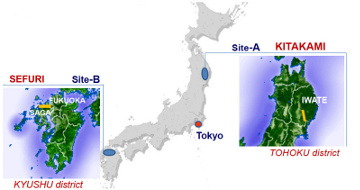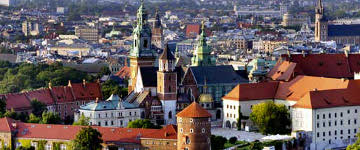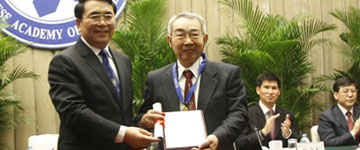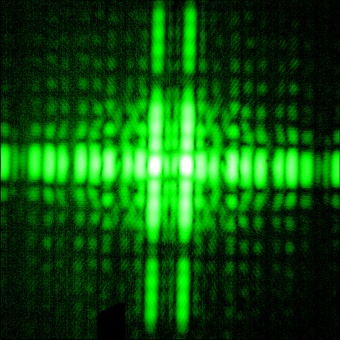Around the WorldFrom CERN Courier: Council solicits opinion to chart the future of European particle physicsDuring its December meetings, CERN Council announced that an Open Symposium will be held in Cracow on 10–13 September 2012 for the purpose of updating the European Strategy for Particle Physics. Council adopted Europe’s current strategy for the field in July 2006 with an understanding that it be brought up to date at appropriate intervals of typically five years. The Open Symposium is part of a process designed to get the maximum input from the particle-physics community, as well as from other stakeholders both inside and outside Europe, as Europe’s strategy forms part of a global whole.
Read more in CERN Courier |
Around the WorldChina awards Shin-ichi Kurokawa for his international scientific cooperationShin-ichi Kurokawa, professor emeritus of KEK, has been awarded the 2011 award for International Scientific Cooperation by the Chinese Academy of Sciences. Since the eighties, Kurokawa has been actively promoting academic cooperation and exchanges in science and technology between Japan and China, and later expanded it to Asian-wide collaborative research. He also served as chair of the Asian Committee for Future Accelerators and of the ILC Steering Committee.
|
Image of the week
|
ILC technology in the Guinness Book of World Records!The world’s fastest (and shortest) movie has superconducting radiofrequency technology to thank for its entry into the Guinness Book of World Records. Shot at DESY’s FLASH X-ray laser, which accelerates electrons in much the same way as the ILC will, it shows a micro model of the German Brandenburg Gate at an interval of a mere 50 femtoseconds between two frames. |
In the News
-
from Science27 January 2012As physicists at Brookhaven National Laboratory continually upgrade the $1.1 billion Relativistic Heavy Ion Collider (RHIC) and the two big particle detectors it feeds, known as STAR and PHENIX, they hope to map out the relationship between ordinary nuclear matter made of protons and neutrons and the quark-gluon plasma, which may be analogous to the relationship between liquid water and steam. They are also planning a $500 million upgrade for early next decade that would enable the collider to answer a key puzzle about the proton itself—if RHIC doesn’t fall victim to budget cuts. (Subscription required)
-
from BBC News27 January 2012The question of whether normal matter’s shadowy counterpart anti-matter exerts a kind of “anti-gravity” is set to be answered, according to a new report.
-
from Nature.com26 January 2012In addition, the closure of the Tevatron, Fermilab’s particle collider, in 2011, means that the United States risks being left without a large-scale particle-physics experiment, and young experimentalists will have to go to Europe to work on the Large Hadron Collider.
-
from CERN Courier25 January 2012KEK is upgrading its B factory to provide a 40-fold increase in luminosity by using a large crossing-angle and squeezing the beams down to nanometres. The Belle experiment will also see a second incarnation.
Copyright © 2024 ILC International Development Team




